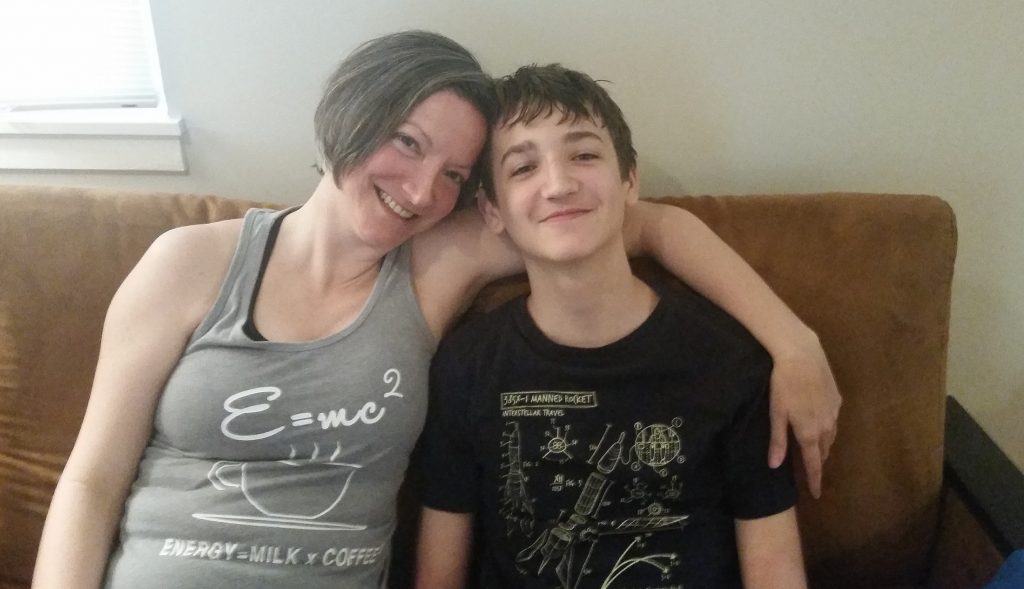Since our earliest days as humans, we struggled to care for ourselves, our young, and our elders while testing theories to improve quality of life on this harsh planet.
As we entered the Space Age, we came to believe the struggles of the past would fade into the distance like so many spent rocket boosters. Affordable daycare and time-saving kitchen appliances meant mom was liberated to join the 9-to-5 workforce. Cheap life and long-term care insurance meant we would never “be a burden to our children” (remember those ads?).
Growing up a GenX kid in the last part of the twentieth century wasn’t so bad. I came of age with AOL and Netscape, became the first person in my family with an email account, and marveled each time the Hubble Space Telescope sent back images from a long time ago in a galaxy far, far away.
I was a true believer in the rich promise of modern convenience, so I was blindsided when as a 34-year-old wife and working mom of a preschooler, I found my own mom suffering cognitive impairment and losing the capacity to care for herself. She was just turning 70.
Gateway to Another Dementia
For the next five years, the center of gravity in my life shifted almost hourly. I worried constantly about my mom as she steadfastly refused to leave her three-bedroom house in Florida or hire in-home help. I racked-up miles flying from where I lived with my husband and son in the DC suburbs to visit her. It seemed each time I visited I was met with a new and unexpected crisis; like the time the electricity and water were cut-off in the middle of summer (she had the money but didn’t pay bills for months).
I would spend those visits fussing over the dusty house, the lapsed car insurance, or buying clothes to fit her shrinking frame. Meanwhile, she would fret over and resist everything I tried to change in her home environment. “She’s like an unruly teenager,” I complained to a friend in one of many moments of frustration.
After years of my brother and I almost begging her to leave her house for a safer, smaller place, or to move into his house (he offered first), she finally relented. A little over three years ago she moved in—with me.
The Right Stuff
My husband, who to me is both Sexiest Man Alive (I don’t care what People Magazine says) and one of the kindest souls on Earth, welcomed his mother-in-law, who was never particularly kind to him, into his home with warmth and compassion. He spent his few days off in August 2015 managing Ikea deliveries and contractors to turn our guest room into her room, our hallway bathroom into a safe space for a 75-year-old with movement disorders and getting our two flights of stairs equipped with chair lifts to prevent her falling.
Our son was about to turn ten by this time. “I’ve never seen her smile,” he said once as we talked about what changes to expect when Grandma came to live with us.
How could he have remembered her smiling over him when he was a newborn or playing silly games with him as a toddler. The changes in her happened in a few short months just prior to his fourth birthday, but being a bright and kind-hearted grandson, he welcomed the opportunity to get to know her as she was and to help engage her in our family activities.
Our Continuing Mission
My expectations were low. I considered Mission Grandma a pilot test, but I am happy to say we are doing OK after three years as a three-generation household. We also learned we are not alone in this journey.
Affordable Long-Term Care is the great challenge facing elders and their families in this country today. The population of older adults is swelling, and if you live past 65, odds are you will need some kind of long-term care in your lifetime. Unlike generations past, most of us don’t have four children and 12 grandchildren all living nearby to help out at little or no cost.
The Workforce of the Future is going to need training for both their Space Age ambitions and the age-old challenges of caregiving and family connection. We have to invest in our kids for everyone’s sake. They will have to solve challenges on a planetary scale and be the caregivers too. There is already a shortage of home care workers, so we cannot assume enough help can be hired to help everyone.
Intergenerational Peace in Our Time is possible. Multi-generational households are increasing in America. The percentage of adults 85 and older living in a multi-generational house increased from 18 percent in 1990 to 25 percent in 2016. Millennial children of Baby Boomers are also boomeranging back to live with mom and dad (and maybe grandma and grandpa too) more than their parents or GenX cousins ever did.
The Big Bang Theory of Everything
My son has seen my mom smile. He has seen her laugh, and I have heard them laugh together.
After we finish family dinner in the evenings, he puts milk and cookies on a tray, and they retreat to her room for dessert and two episodes of a favorite sitcom. She introduced him to The Big Bang Theory (chock-full of the breed of nerdy science jokes that delight him so much). They have seen every episode of Third Rock from the Sun, Cheers and are just finishing its spin-off, Frasier. He was so proud when he heard the “Sam and Diane” reference in Guardians of the Galaxy and knew who the Chris Pratt character was referencing.
Growing up the kid of a GenX kid with Grandma across the hall isn’t so bad.
